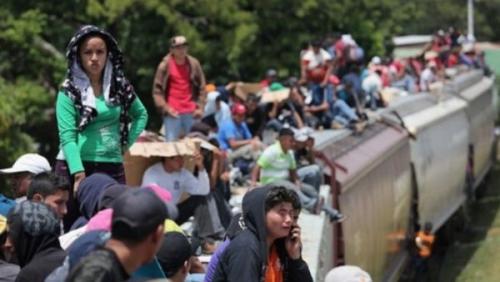Marginalization and violence towards Central American migrants
- Opinión

"... The human rights of migrants are still a distant and remote promise of equity and social justice…. in fact, migrants are the target of the xenophobic and racist policies and speeches of many of the countries of the global north”.
Urban Arbide.
In the context of capital and goods flows that favor transnational political and economic elites, one of the most damaging faces of neoliberal globalization is the massive migrations across various borders and to the northern countries. Various irregular migrations have increased and are the result of decades of neoliberal policies. In several countries of the global south, the vertiginous increase in inequality, the unstoppable increase in poverty (as a result of the previous and voracious concentration of wealth) and the production of adverse contexts of existence linked to violence and corruption in undemocratic states (that favor certain privileged groups and deteriorate the living conditions of the great majority), have been the various contexts and causes of these forced and highly precarious migrations.
One of the most pronounced and dramatic cases are the Central Americans, who, from about two decades ago and in proportions of hundreds of thousands a year, are heading from their places of origin to the north (United States), in search of better living conditions and, on many occasions, only for the purpose of survival. Particularly in the Central American region, the impacts of neoliberalism and the complex histories of political violence have been directly related to the causes and motivations to migrate.
According to various reports of pro-migrant organizations (REDODEM, MSF) [1], migrants are forced to flee their home countries mainly for three reasons: (1) economic causes (poverty, low wages, lack of job opportunities, accelerated growth in the cost of living and economic crises); (2) generalized violence as a factor of expulsion (related to organized crime and gangs, as well as to structural insecurity contexts); (3) and the socio-environmental impacts and climate change, derived from the highly polluting processes of transnational production of neoliberal global capitalism.
Particularly relevant is to consider that the United States, for decades and through an aggressive interventionist and control policy, has played a central role to forcefully implement this economic model in the Central American region. Likewise, in recent years, this country of the global north, through various geopolitical and socio-economic pressure strategies, has defined and shaped the restrictive migration policies and border control (closure) of Mexico and the countries of the northern triangle of Central America (Honduras, El Salvador and Nicaragua), in this wide migratory corridor. In this way, the weight of the United States anti-immigrant racism is a key element in understanding the precariousness and violence that migrants suffer at various points in their travels, across multiple countries and across borders.
As a result of the above and according to information from the UN Missing Migrant Project (MMP), 2019 was a fatal and lethal year for migrants in America, where it was reported that about 800 people died in their migration trajectories [2]; and the areas that concentrated the greatest number of human life losses were just some points of the Mexico-United States border, the Rio Grande (between Texas and the Mexican states Tamaulipas, Nuevo León and Coahuila) and the Altar desert (between Arizona and Sonora), two of the most dangerous points. Thus, 2019 was the year with the most deaths in the last five years. And, since 2014 (the year in which MMP registrations began) to date, more than three thousand deaths have been counted in the continent (the vast majority are probably Central American and occurred mainly at the borders in Mexico and the United States). These deaths are, in various ways, related to racism and border closures.
NOTES
[1] http://redodem.org/wp-content/uploads/2019/09/REDODEM-Informe-2018.pdf
https://www.msf.mx/document/forzados-a-huir-del-triangulo-norte-de-centr...
[2] https://news.un.org/es/story/2020/01/1468662
Del mismo autor
- Forced internal displacement in Mexico and processes of violence 13/03/2022
- Labor struggles against precarious work and agribusiness exploitation 09/01/2022
- Detentions, deportations, and criminalization of migrants 29/11/2021
- México: detenciones, deportaciones y criminalización de los migrantes 15/11/2021
- Visibility of migrant voices and subjects 18/10/2021
- La decolonialidad y el abordaje de las movilidades humanas transfronterizas 01/10/2021
- Migrants, social organizations, and policies to control cross-border mobility 20/09/2021
- Decoloniality and sense of the production of social knowledge 06/09/2021
- Decolonialidad y sentido de la producción de conocimiento social 26/08/2021
- México: migrantes, organizaciones sociales y políticas del control de las movilidades transfronterizas 09/08/2021
